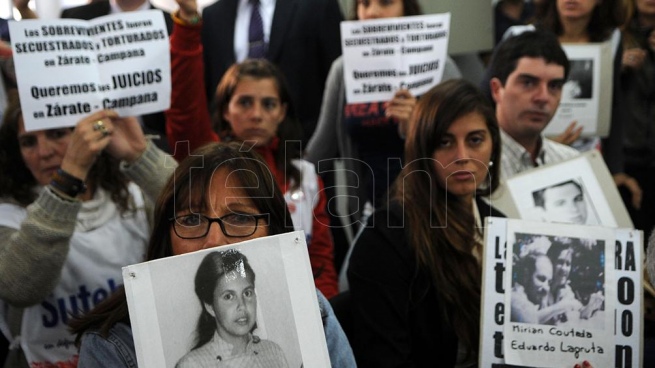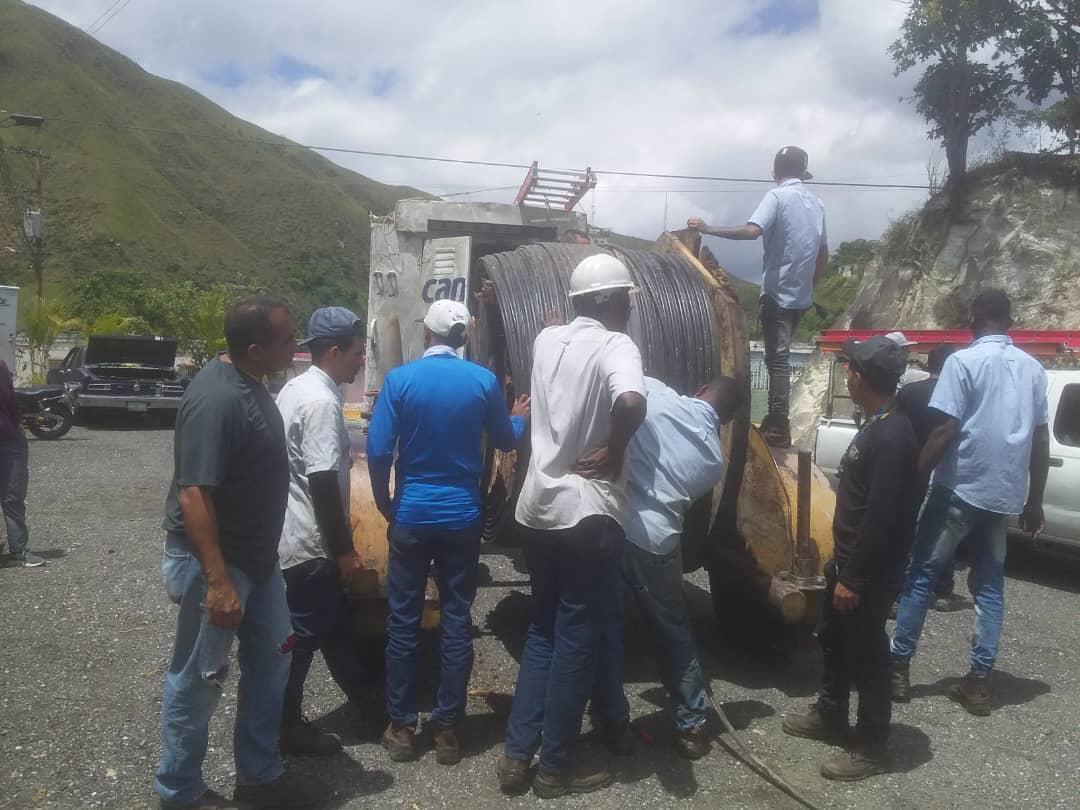The verdict of the trial that investigates the crimes against humanity committed during the civic-military dictatorship in the Campo de Mayo Megacause will be known next Wednesday, when the Federal Oral Court No. 1 of San Martín announces the sentence after listening to more than 700 witnesses.
With this hearing, which will be face-to-face and will take place from 2:00 p.m. in the courts of San Martín, The process against 19 defendants will end – among them the repressor Santiago Omar Riveros – for their actions against 350 victims who were taken to Campo de Mayo during the last dictatorship.
“The expectation about the verdict is full because during the process the operation of the repressive apparatus was realized, which was made up of the people who are in the dock of the accused,” the prosecutor told Télam Gabriela Sostimember of the Fiscal Unit for Lesa Humanidad de San Martín.
The trial, in which a total of 765 witnesses testifiedis an accumulation of multiple causes that were processed separately in the instruction stage.
“The expectation about the verdict is full because during the process the operation of the repressive apparatus was realized, which was made up of the people who are in the dock of the accused”Gabriela Sosti
Counted a total of 350 victims and they were judged in principle 22 defendants, of whom 19 remained at the end of the process (two died of natural causes, and one was separated due to irreversible illness), who are accused of crimes of torture, kidnapping, and homicide, as well as raids, robberies aggravated and aggravated sexual abuse.
During the dictatorship, the Campo de Mayo property -about four thousand hectares- housed prisoners in various places: El Campito or Los Tordos, Las Casitas or La Casita; the Military Hospital with the clandestine maternity and the prison for Accused Persons.
In the plea, The prosecutor estimated that more than 6,000 people passed through Campo de Mayo and the survival rate was less than one percent.
The accused
Among the defendants are Francisco Rolando Agostino, Luis Del Valle Arce, Alfredo Oscar Arena, Pacífico Luis Britos, Bernardo Caballero, Ramón Vito Cabrera, Carlos Daniel Caimi, Hugo Miguel Castagno Monge, Miguel Ángel Conde, Mario Rubén Domínguez, Rodolfo Emilio Feroglio ( was left out of court due to supervening disability), Roberto Julio Fusco, Eugenio Guañabens Perello, Federico Ramón Ramírez Mitchell, Santiago Omar Riveros, Carlos Alberto Rojas, Arnaldo Jorge Román, Luis Sadi Pepa, Carlos Eduardo José Somoza and Calos Javier Tamini.
During the process, the former information assistant of the Information Corps of the Argentine Federal Police, Carlos Villanova, died of natural causes; and the former head of the Operations department, Guillermo Pascal Muñoz. Meanwhile, Rodolfo Feroglio, the director of the official Army Cavalry School, was removed due to an irreversible illness.
“The named subjects are just a sample of the monumental machinery assembled, articulated, fed, oiled to produce the most ominous death ritual of which our country has memory”interpreted the prosecutor Sosti.
And he added: “The genocide organized a community for death. And these defendants conscientiously integrated it, with their varied contributions. All essential. Because without what each one did, collective action would not have been possible.”
“The expectations about the verdict are high, taking into account all the evidence that has been produced during the trial, as well as the testimonies that have been heard, and the background that has to do with the responsibilities already accredited in other trials,” he said. to Telam Cyrus Annicchiaricoplaintiff for the Secretary of Human Rights.
He also remarked that “The actions of the defendants are proven to be part of this joint criminal plan, where none of them was unaware of the repressive plan that was also armed with the participation of the intelligence system”.
“The expectations about the verdict are high, taking into account all the evidence that has been produced during the trial, as well as the testimonies that have been heard, and the background that has to do with the responsibilities already accredited in other trials”Cyrus Annicchiarico
At this point, he added that the trial passed “emblematic cases that have to do with large companies such as Mercedes Benz, Railways, which in some way put the magnifying glass on corporate responsibility, an analysis that we are promoting.”
In his plea of more than 1,500 pages, Sosti helped shed light on what happened in the mega-cause, which “It made it possible to focus on that territory (Campo de Mayo) and understand the functioning of the repressive system implemented there in a broader way, and not so limited, as could have happened in previous cases”.
The prosecutor indicated that the crimes committed were carried out by the accused “with each one of them in particular, in charge of different functions, contributing to the common crime.”
As he explained, “in these trials there is generally no direct evidence, but different hierarchies are observed (in criminal matters) that go through all the actors, from those who were inside the Campito to those who were in other estates.”
Mass kidnappings of workers
During the process, mass kidnappings of workers, internal commissions and delegates were also investigated, including workers from Dálmine Siderca, Mercedes Benz, the Mestrina, Cadenasi, Tensa and Astarsa shipyards; railway workers, Martín Fierro Refrigerator, Stationery and Graphics, Nasar Laboratory, Squeeb, Oramon Laboratory, Campana Chemical Union, state employees, Health employees of hospitals in the City of Buenos Aires, San Miguel and San Fernando.
On the other hand, The prosecutor highlighted that in this particular case, “what happened in the military Area 400 and infrastructure that was deployed in the Zárate and Campana area, a place that the soldiers themselves had named as the Paraná snake, was judged.”.
They gave it that name because the “steel companies that marked the Argentine industrial profile at that time” were located there and where “there was a very conscious and militant working class, for which the repression was tremendously focused on that place.”
“It began in Villa Constitución in ’75, and continued in Zárate Campana, something that this trial accounts for because it shows how progress was made on the economic and manufacturing concentration that existed in those years,” said the prosecutor.
Also, in the process it was learned “from the mouth of one of the defendants that high military ranks met with businessmen from the north, that is to say that, a few steps from where their workers were tortured, those responsible for those factories met with the cadres military”.
The court investigating the facts is made up of Daniel Omar Gutiérrez, Silvina Mayorga and Nada Flores Vega; meanwhile, the prosecutors who act are Marcelo García Berro and Sosti.









